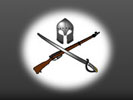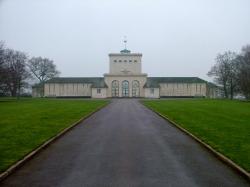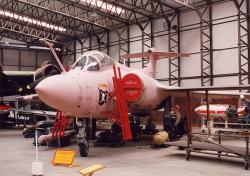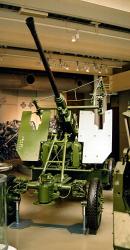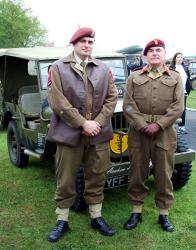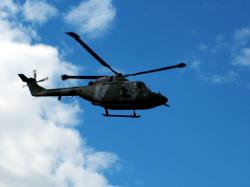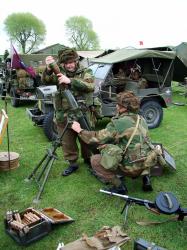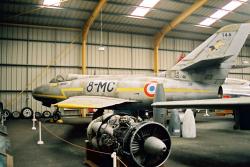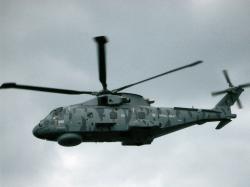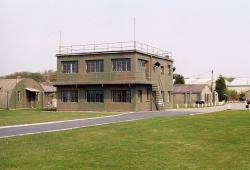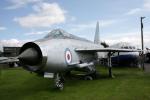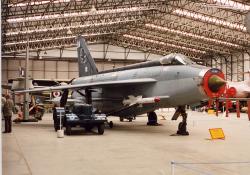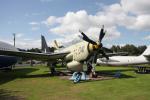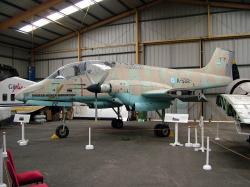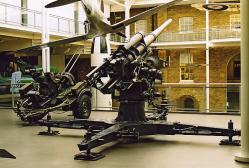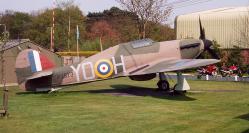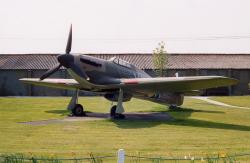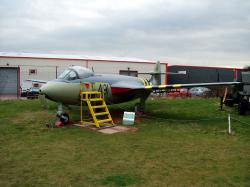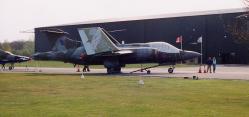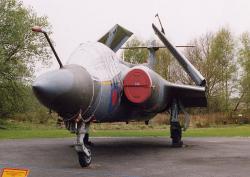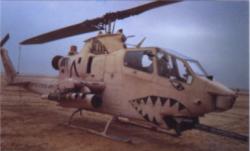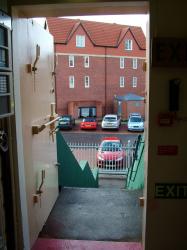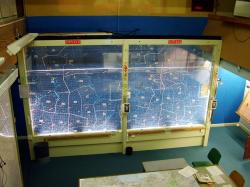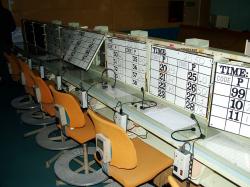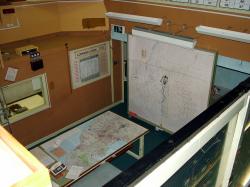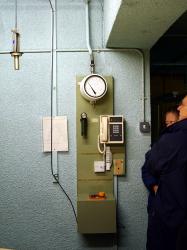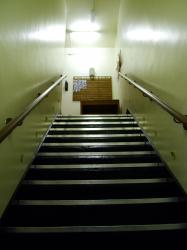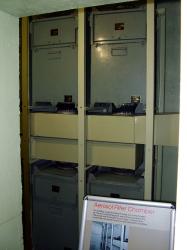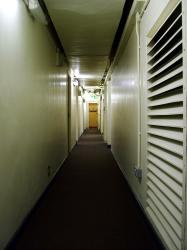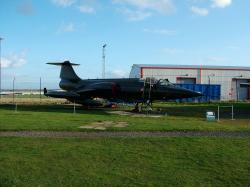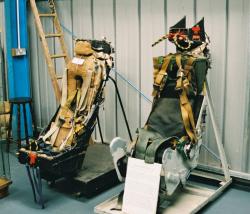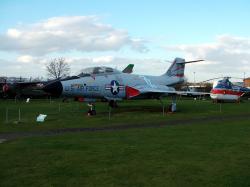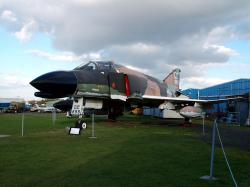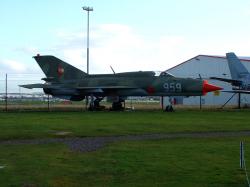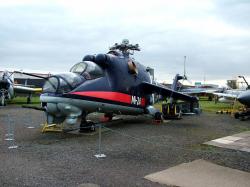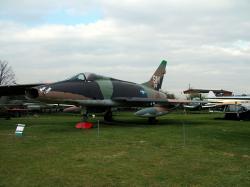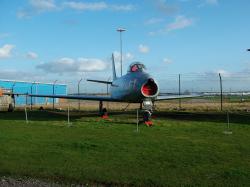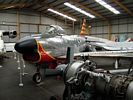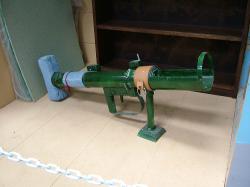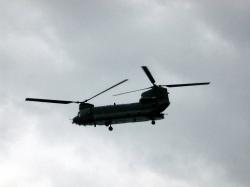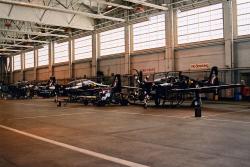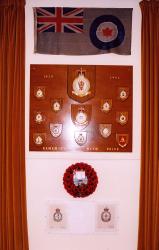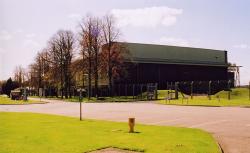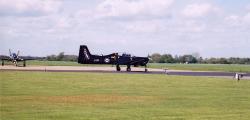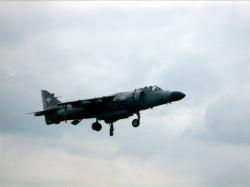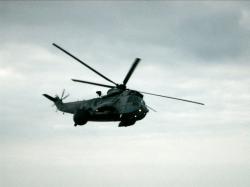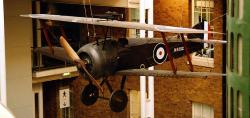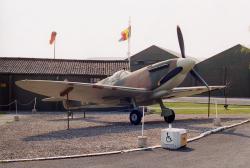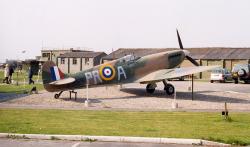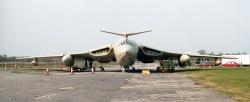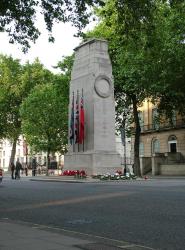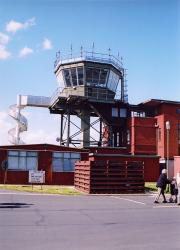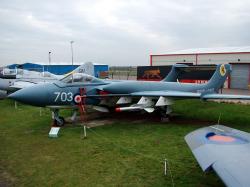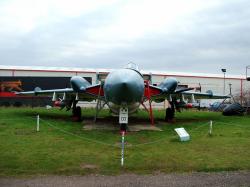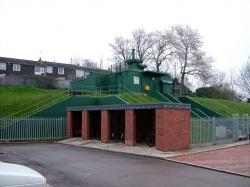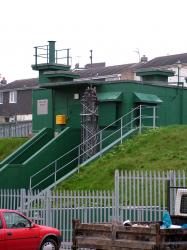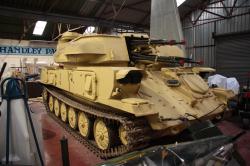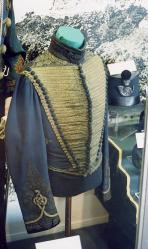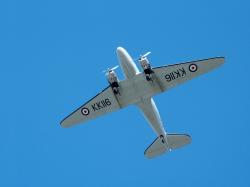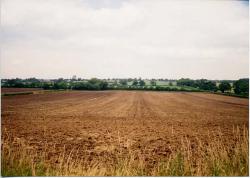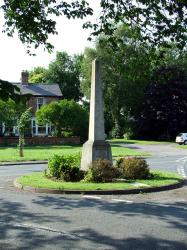Translate this Page
Recent images :
- International Harvester M5 halftrack
- Dassault Mystère Mk IVa number 146
- Ark Royal, Anti-ship missile defence gun.
- RAF Series 2 Land Rover
- Lightweight, air portable Land Rover
- Daimler Ferret Mk 1/2 Armoured Car
- RAF Mountain Rescue Series 3 Land Rover
- French Bronze 6 pounder cannon
- Farsley South African War Memorial
- Farsley War memorial
Images related to Military Aviation and Airborne operations
Click on the entry for a larger image and details, or click to go back to the previous index
A memorial to more than 20,000 aircrew of the Royal Air Force and Commonwealth Air Forces who died in the second world war and who have no known grave. It takes the form of a quadrangle of cloisters, approached by a long drive leading to three arches...
Runnymede, near Windsor, Berkshire, UK. February 2005.
Midlands Aircraft Museum, Coventry Airport, Baginton,England. March '07 & March '08
This Buccaneer 'XX901' served with the RAF in the 1st Gulf War, 1991, and is pictured here in those colours.
Yorkshire Air Museum, Elvington, York, England. Easter 2003
The 40mm L/60 automatic anti-aircraft gun was designed in Sweden by Bofors in 1928. It became so successful it was simply known as a 'Bofors gun' and in various guises has been used by many armed forces up to the present. This particular example date...
Imperial War Museum, London, England. October 2003.
A de-activated example of the ubiquitous British 1,000lb bomb carried by most of the RAF's ground-attack aircraft and although not sophisticated, effective and cheap.
North East Aircraft Museum, Sunderland, England. October 2004.
Two members of the Normandy Arnhem Society portraying officers of the 9th Airborne Field Company, Royal Engineers during Operation Market Garden - the paratroop attack on Arnhem in the Netherlands in 1944. They are pictured in front of their Willy's ...
The Wheels and Wings 2006 event, Yorkshire Air Museum, York, UK. May 2006.
The army's primary battlefield utility helicopter seen here with the improved rotor tips.
Army in Yorkshire event, Imphal Barracks, York, UK. July 2008
Re-enactors from the Victory in Europe Re-enactment Association (VERA) as a paratroop heavy weapons platoon in action in north-west Europe, 1944. They portray soldiers of the 1st Battallion, The Border Regt. And are demonstrating how a crew would adj...
The Wheels and Wings 2006 event, Yorkshire Air Museum, York, UK. May 2006.
French fighter-bomber of the 1950's up the the 1970's
Midlands Aircraft Museum, Coventry Airport, Baginton,England. March '07 & March '08
The Mystère first flew on 28th Sept 1952, and more than 480 of these single-seat fighter-bombers flew with the French, Indian and Israeli Air Forces in the 1950's and 60's. They were armed with 2 x 30mm DEFA cannons, rockets in an under-fuselage pac...
North East Aircraft Museum, Sunderland, England. Spring 2004.
Awaiting further details.
Midlands Aircraft Museum, Coventry Airport, Baginton,England. March '07 & March '08
An Augusta Westland EH101, in service with the Royal Naval Air Service as a Merlin HM.1 No. R269. It's primary roles are anti-submarine and Anti-surface warfare, but can also be used in the Airborne early warning, Search and Rescue, Medevac and trans...
Portsmouth Naval Dockyard, July 2003
The original control tower of the former RAF Bomber Command airfield at Elvington, near York. It has been restored to it's original condition as it would have been during World War 2 when this base was home to 77 Sqn of No. 4 Group RAF which flew Han...
Yorkshire Air Museum, Elvington, York, England. Easter 2003
The classic lines of the British Lightning interceptor, which was in use across the world from the late 1950's into the 1980's. It's 'party piece' was to stand on it's tail almost from take-off and climb vertically to it's operational height and coul...
Dumfries and Galloway Aviation Museum, August 2010
This Lightning, 'XS903' was built in 1966 and flew with No. 5 Sqn at RAF Binbrook and Akrotiri, Cyprus and with 11 Sqn at Coningsby until 1987.
Yorkshire Air Museum, Elvington, York, England. Easter 2003
The airborne early warning radar aircraft used by the Royal Navy's Fleet Air Arm during the 1960's. It's highly distinctive shape includes novel coaxial contra-rotating propellers, double folding wings and the bulbous radar housing on the underside.
Dumfries and Galloway Aviation Museum, August 2010
The Pucara is a ground support and counter-insurgency aircraft used in various airforces around the world, most notably by the Argentinian Air Force during the Falklands War. There it was also found to be effective against hellicopters but vulnerable...
North East Aircraft Museum, Sunderland, England. October 2004.
The premier, multi-purpose gun of the second world war, the German 88 was respected and feared wherever it was encountered. A high muzzle velocity, good accuracy and penetrating ammunition, as well as plentiful production meant that this AA gun could...
Imperial War Museum, London, England. October 2003.
The first twin engined delta-winged jet, the Javelin saw sevice with the RAF from 1956-68. An impressive all-weather fighter, nearly 400 were built, although this Mk 5 is thought to be the only one remaining of it's type.
Midlands Aircraft Museum, Coventry Airport, Baginton,England. March '07 & March '08
First introduced in the early 1950's and still serving with various airforces around the world right into the 1990's, the Hunter has been described as Britain's most successful post-war military aircraft. It was also the last in a line of classic fig...
North East Aircraft Museum, Sunderland, England. October 2004.
The Hurricane went into service with the RAF in 1937 and proved to be an excellent all-round fighter-interceptor, particularly in the Battle of Britain during which it claimed 80% of the RAF's kills. This replica Hurricane painted in the colours of '...
Yorkshire Air Museum, Elvington, York, England. Easter 2003
The Hurricane went into service with the RAF in 1937 and proved to be an excellent all-round fighter-interceptor, particularly in the Battle of Britain during which it claimed 80% of the RAF's kills. This replica Hurricane painted in the colours of '...
Yorkshire Air Museum, Elvington, York, England. Easter 2003
This aircraft served with the Royal Navy and is painted in the Suez Invasion colour scheme from 1956.
Midlands Aircraft Museum, Coventry Airport, Baginton,England. March '07 & March '08
This 2-seat low-level strike aircraft 'XN974' was the first production S2 and made its maiden flight on 5th June 1964. It served with the Fleet Air Arm on board the carrier HMS Eagle, then became an avionics development aircraft with British Aerospac...
Yorkshire Air Museum, Elvington, York, England. Easter 2003
This 2-seat low-level strike aircraft 'XN974' was the first production S2 and made its maiden flight on 5th June 1964. It served with the Fleet Air Arm on board the carrier HMS Eagle, then became an avionics development aircraft with British Aerospac...
Yorkshire Air Museum, Elvington, York, England. Easter 2003
A Cobra attack helicopter of the 4th squadron, 2nd Armoured Cavalry.
Kuwait/Iraqi desert, 1991
Views from a tour around the York Cold War Bunker
Acomb, near York, UK. Feb 2007
Views from a tour around the York Cold War Bunker
Acomb, near York, UK. Feb 2007
Views from a tour around the York Cold War Bunker
Acomb, near York, UK. Feb 2007
Views from a tour around the York Cold War Bunker
Acomb, near York, UK. Feb 2007
Views from a tour around the York Cold War Bunker
Acomb, near York, UK. Feb 2007
Views from a tour around the York Cold War Bunker
Acomb, near York, UK. Feb 2007
Views from a tour around the York Cold War Bunker
Acomb, near York, UK. Feb 2007
Views from a tour around the York Cold War Bunker
Acomb, near York, UK. Feb 2007
Views from a tour around the York Cold War Bunker
Acomb, near York, UK. Feb 2007
Views from a tour around the York Cold War Bunker
Acomb, near York, UK. Feb 2007
Although not popular with the USAF, the F104 (in it's C variant) flew in Vietnam in 1965. It saw most service, however, with European air forces in it's G variant. This example with it's distinctive dark colour scheme flew in the Royal Danish Airforc...
Midlands Aircraft Museum, Coventry Airport, Baginton,England. March '07 & March '08
An essential piece of kit in any modern military aircraft, this image shows a pair of Martin-Baker ejector seats, the likes of which have saved many an aircrews' life since their invention in the mid 1940's. The seat on the left was fitted in an RAF ...
North East Aircraft Museum, Sunderland, England. Spring 2004.
Another iconic 1960's US fighter/interceptor which served with distinction in the photo-reconnaisance role into the 1980's. This example is painted in the 60th Fighter Interceptor Squadron USAF.
Midlands Aircraft Museum, Coventry Airport, Baginton,England. March '07 & March '08
One of the most successful fighter aircraft of the latter 20th Century, the F4 saw service with many airforces across the world including the RAF and the Royal Navy as well as many other European, Middle Eastern and Far Eastern Airforces. It saw acti...
Midlands Aircraft Museum, Coventry Airport, Baginton,England. March '07 & March '08
The classic fighter-bomber of the Soviet Cold-War days, this example served with the East German Army Air Force fro 1968 until the late 1980's
Midlands Aircraft Museum, Coventry Airport, Baginton,England. March '07 & March '08
This impressive Russian combat helicopter has served with 30 countries and saw particular service in Afganistan during the Russian Occupation. This example was bought by BAe Systems and is on loan to the Midlands Aircraft Museum from them, hence the ...
Midlands Aircraft Museum, Coventry Airport, Baginton,England. March '07 & March '08
An iconic fighter-bomber of the Vietnam war era which could carry 7,500lbs of bombs on 6 underwing pylons along with 4 x 20mm cannon mounted in the fuselage.
It could travel in excess of 860mph and reach a ceiling height of 45,000ft.
While this...
Midlands Aircraft Museum, Coventry Airport, Baginton,England. March '07 & March '08
Iconic of the Korean War, the F86 Sabre was one of the most successful of the post-WW2 jet fighters and had a kill:loss ration in Korea of 10:1
Midlands Aircraft Museum, Coventry Airport, Baginton,England. March '07 & March '08
The evocative Sabre of the Korean War, this was one of the most famous fighters of the late 1940's and 1950's. This is an F86D, the all-weather interceptor variant with an elegant extended and re-designed nose housing an array of complex electronics ...
North East Aircraft Museum, Sunderland, England. October 2004.
The Projector, Infantry, Anti Tank weapon or PIAT for short was used by British forces during and after World War 2, particularly by paratroopers when no other anti-tank guns were available for example at Arnhem and Pegasus Bridge. It had to be loade...
North East Aircraft Museum, Sunderland, England. October 2004.
The RAF's largest helicopter, tasked with support transport, can accommodate 54 equiped troops or a 10 tonne payload. The load bay is large enough to fit two Landrovers. Chinooks like this one were carried aboard HMS Ark Royal and Ocean in the recent...
Portsmouth Naval Dockyard, July 2003
A row of Tucano T1's undergoing line servicing inside one of the hangars at RAF Linton-on-Ouse. The hangars have changed little in 65 years.
RAF Linton-on-Ouse, North Yorkshire, England. May 2004.
A memorial in the station museum at Linton-on-Ouse to the squadrons and personnel who served there during the Second World War. The Royal Canadian Air Force ensign is included as the airfield was, during the war, home to RCAF units.
RAF Linton-on-Ouse, North Yorkshire, England. May 2004.
These two hangars still used to house RAF Linton-on-Ouse's complement of Tucano T1 training aircraft are the original hangars built when the station first opened in May 1937 and are largely unchanged. Comfortably accomodating the Halifax and Whitley ...
RAF Linton-on-Ouse, North Yorkshire, England. May 2004.
These two pictures show aircraft from the two squadrons comprising No.1 Flying Training School at RAF Linton-on-Ouse. The aircraft themselves are Tucano T1's designed by Embraer of Brazil but assembled by Shorts of Belfast, Northern Ireland. They are...
RAF Linton-on-Ouse, North Yorkshire, England. May 2004.
This picture of a Tucano of No.72(R) Sqn taxiing to the hold on the main runway at Linton-on-Ouse prior to a training exercise vividly shows off the RAF's new training colour scheme. They have concluded that contrary to normal military aircraft, trai...
RAF Linton-on-Ouse, North Yorkshire, England. May 2004.
The only fixed-wing, carrier-borne aircraft left in service with the Royal Navy. The Sea Harrier, built by BAe Systems provides fleet defence and strike capabilities.
Portsmouth Naval Dockyard, July 2003
After the Falklands War it became clear that the Royal Navy lacked and Airborne Early Warning radar capability. This version of the trusty Sea King helicopter is the result, note the radar dome slung amidships, which pivots rearward for landing.
Portsmouth Naval Dockyard, July 2003
The Sopwith Camel (so called because of the hump in the forward fuselage between the pilot and the propeller) arrived late in the First World War, entering service on the western front on 4th July 1917, to late to prevent the 'happy time' in April th...
Imperial War Museum, London, England. October 2003.
One of the finest combat aircraft in service during the second world war, the Spitfire entered service in June 1938. This replica is painted in the colours of 'R6690' of No. 609 (West Riding) Squadron and serves as a monument to that squadron. The or...
Yorkshire Air Museum, Elvington, York, England. Easter 2003
One of the finest combat aircraft in service during the second world war, the Spitfire entered service in June 1938. This replica is painted in the colours of 'R6690' of No. 609 (West Riding) Squadron and serves as a monument to that squadron. The or...
Yorkshire Air Museum, Elvington, York, England. Easter 2003
The most famous of the V bombers, and an aircraft to stir the heart of many an airman and enthusiast alike, this Vulcan XL319 served with the famous 617 Sqn in a nuclear strike role. It was able to carry a Blue Steel nuclear missile or 21 x 1,000lb c...
North East Aircraft Museum, Sunderland, England. Spring 2004.
A photograph of the 'belly of the beast'. The underside of the Vulcan clearly shows the bomb-bay doors between the two pairs of engines which would have parted to release it's nuclear payload, had diplomacy failed in the Cold War.
North East Aircraft Museum, Sunderland, England. Spring 2004.
Actually a re-design from the original B2 bomber of the 1960's, this K2 designed in 1971 is an in-flight refueling tanker and has prolonged the service of this marque into the 1990's. This actual aircraft "Lusty Lindy" preserved at the Yorkshire Air ...
Yorkshire Air Museum, Elvington, York, England. Easter 2003
The symbolic 'empty tomb' in Whitehall, London which is the focus of Remembrance Day commemorations in the UK. It was designed in 1919 by Sir Edwin Lutyens in Portland Stone, and is surrounded by the flags of the Navy, Army, Air Force and Merchant Na...
Whitehall, London. June 2005
This picture shows the various developments in control tower design over 65 years. The steel and glass construction in the centre is the modern control tower from which airfield movements are controlled on this busy training airbase. The larger brick...
RAF Linton-on-Ouse, North Yorkshire, England. May 2004.
Midlands Aircraft Museum, Coventry Airport, Baginton,England. March '07 & March '08
Midlands Aircraft Museum, Coventry Airport, Baginton,England. March '07 & March '08
York Cold War Bunker - the No.20 Group Royal Observer Corps bunker built in 1961 to monitor nuclear bombs in the event of war
Acomb, near York, UK. Feb 2007
York Cold War Bunker - the No.20 Group Royal Observer Corps bunker built in 1961 to monitor nuclear bombs in the event of war
Acomb, near York, UK. Feb 2007
York Cold War Bunker - the No.20 Group Royal Observer Corps bunker built in 1961 to monitor nuclear bombs in the event of war
Acomb, near York, UK. Feb 2007
This WE-177 nuclear bomb training round (never armed with atomic material) is an example of part of Britain's nuclear deterrent from 1966 up the the 1980's. The WE-177 was designed to be delivered by Buccaneer, Vulcan and Tornado aircraft and was par...
North East Aircraft Museum, Sunderland, England. October 2004.
Cold-war era Soviet armoured anti-aircraft defence. Armed with 4x23mm guns, came into service in 1962 and had a crew of 4.
This particular example was captured in Iraq during operation Desert Storm.
Elvington Air Museum, March 2018
